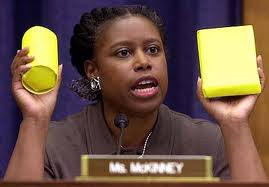UPDATE: Massive weekly candlelight demonstrations that began last fall on Oct. 29 and that brought an incredible 2.3 million into the streets of central Seoul on Dec. 3 have been transforming South Korea’s politics and society, pressuring the National Assembly to impeach and oust the corrupt President Park Geun-hye and now bringing about the election of a peace candidate from the Democratic Party of Korea (DPK), Moon Jae-in.
Moon’s election is a historic moment pregnant with new opportunities.
A human rights lawyer and former student activist, Moon is calling for an end to threats by the US against North Korea and for the adoption of a policy of friendship and peaceful negotiation with the north.
His biggest challenge though will be ending the subservient colonial-status that lies at the heart of the US-South Korea relationship, dating back to the US military occupation of South Korea that began in 1945 with the end of World War II.
Many Americans may know that the Korean War never really ended, and that rather, with the armies of China and the US and their respective North and South Korean “allies” having battled to a stalemate at roughly where the border was at the start of the war, an armistice was signed. What Americans don’t know is that since the Korean War began, ostensibly under the authority of a United Nations Security Council resolution, the US, under the facade of calling itself the “UN Command,” has continued to exercise full and unfettered control over the armed forces of the Republic of Korea.
This unprecedented situation even led a prominent US commander, the late Gen. Richard G. Stilwell, to call the relationship “the most remarkable concession of sovereignty in the entire world.” Gen. Stilwell went on to note that relying upon a twisted interpretation of the UN resolution that authorized war against North Korea, the US has asserted that it has full authority, acting supposedly in South Korea’s interest, even to use nuclear weapons against the North.
An attempt was made by an earlier peace-advocating candidate from the DPK elected to the presidency to eliminate the U.N. Command but it was rejected on June 24 1994 because the US simply would not allow it. The Security Council, under US influence, merely “recommended” the creation of a unified command, specifying that “it be under the authority of the United States” — a meaningless change in phraseology. Technically, in 1994 the South Korean government was granted control over its military during peace time, but the US would retain control over the country’s military during any time of conflict with the North. That situation is projected to remain in force into some unspecified time in the 2020s.
Thus, the US alone, 67 years after the start of the Korean War, still claims the authority to “decide on the continued existence or the dissolution of the United Nations Command.”
This cancer, which leaves South Korea — the seventh largest national economy in terms of GDP right behind the UK and one of Asia’s most modern countries — as little more than a vassal state or colony of the US, needs to be excised. We will see how the new Moon administration grapples with it and how far the US will go to try and preserve this pathological relationship.
~~~~~~~~~~~~~~~~~~~~~~~~~~~~~~~~~~~~~~~~~~~~~~~~~~~~~~~~~~~~~~~~~~~~~~~~~~~~~
.jpg) Test launch of US THAAD missile defense system now installed in South Korea against the popular wishes — and amid doubts that it would work anyway against a real missile attack. (Army.mil photo)
Test launch of US THAAD missile defense system now installed in South Korea against the popular wishes — and amid doubts that it would work anyway against a real missile attack. (Army.mil photo)
North Korea today is not the North Korea of 1994 when President Bill Clinton seriously considered a preemptive strike against the Yongbyon nuclear reactor. Back then North Korea did not possess any nuclear weapons.
Now North Korea possesses the knowledge of nuclear weapons technology and any US cyberattacks can only slow the process of weapons development but not stop it. Most likely the North’s ability to reconstitute nuclear weapons technology is there for good — and it is proceeding with ICBM experiments too.

.jpg)





